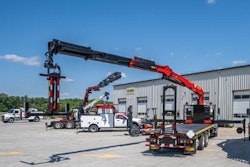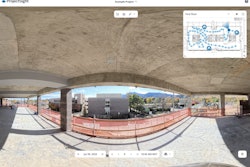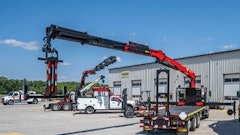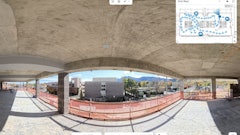
The construction industry is one of the most dangerous professions in the country. In fact, in 2023, about 1 in 5 workplace deaths occurred in the construction industry and 38.5% of these deaths were due to falls, slips and trips. So, it’s no surprise that the impact on insuring the industry is complex, including claim frequency and severity, who gets dragged into lawsuits, how contract wording plays a role, underwriting red flags and reputational harm and its impact on premiums and market access. Here are the most important pitfalls in the construction insurance industry and tips on how to get it right for your clients:
Contractual Risks
- The lack of proper indemnification language or poorly managed risk transfer can lead to significant construction insurance impacts, including uncovered losses, disputes, higher premiums and denial of coverage.
- Misalignment of insurance requirements between parties in contracts can lead to significant financial, legal and operational problems.
Tip: In an industry with so much risk, having a clear contract with a very detailed policy is vital as poor contract terms can negatively impact a claim.
Regulatory and Permitting Issues
- Failure to obtain or update required permits for construction or renovation can cause serious insurance problems, including denied claims, dropped coverage and significant out-of-pocket costs. Insurers may view unpermitted work as negligence, creating a justification for denying a claim related to the unauthorized modifications.
- Noncompliance with zoning, environmental, or OSHA regulations poses significant risks that can affect insurance coverage, costs and a company's insurability.
Tip: Ensure you have the right permits and are compliant with regulations.
Design and Engineering Flaws
- When design errors are not caught before construction, the financial impact generally falls on the design professional, contractor, or project owner, depending on contractual agreements and specific insurance policies.
- Insufficient geotechnical surveys and site evaluations significantly impact insurance by increasing the risk of structural failures, leading to potential claim denials and costly legal disputes.
- Lack of coordination between design professionals impacts construction insurance, leading to higher premiums, claim denials, coverage gaps and legal exposure for contractors.
Tip: Be particular - design errors and omissions increase the overall risk and cost of a project.
Poor Project Management
- Inadequate scheduling, cost estimation, or change order control in construction leads to an increased likelihood of accidents, safety violations, delays, cost overruns, and contractual disputes, which in turn directly result in higher insurance premiums, increased claims and potential policy cancellations.
- Labor shortages increase insurance costs by elevating workplace accident risks due to hiring less experienced workers, leading to more Workers' Compensation claims and potentially higher premiums.
Tip: Communication between owner, architect, GC, and trades is key to avoid mismanagement and costly insurance claims
Material and Supply Chain Delays
- Relying solely on just-in-time delivery in construction without a contingency plan significantly increases the risk of costly project delays and financial losses.
- Defective materials or substitutions without approval can lead to costly claim denials and reduce insurance coverage for construction projects.
Tip: Have a backup plan to avoid higher insurance claims related to project disruptions
Safety and Workforce Risks
- Inadequate training and supervision directly correlate with higher risk on construction sites, which can lead to increased insurance premiums, claims denial and expanded liability.
- High injury rate sites lead to increased workers’ comp claims and OSHA fines. A poor safety record signals to insurers that a contractor is at a higher risk, driving up costs across multiple types of coverage.
- Substance abuse and fatigue significantly increase risks for construction companies, leading to higher insurance premiums, more frequent claims and potential policy exclusions.
Tip: Construction is already a high-risk industry – training and solid safety procedures help to keep insurance premiums and claims low.
Environmental and Site Hazards
· Weather-related delays and damage (floods, hurricanes, wildfires) significantly increase costs and risk for construction projects, as insurers may not cover all associated expenses like extra time or debris removal, leaving gaps in traditional insurance policies.
- The discovery of hazardous materials, such as asbestos, on a construction site can dramatically impact construction insurance. Standard general liability (GL) policies typically exclude coverage for pollution events, necessitating specialized environmental or pollution liability insurance.
- Site-specific risks such as unstable soil or flood zones significantly impact construction insurance by increasing premium costs, limiting coverage and requiring specialized, non-standard policies.
Tip: By proactively identifying and managing risks, companies can reduce their insurance premiums, secure favorable coverage and boost overall project success and profitability.
Insurance Coverage Considerations
Key considerations in construction insurance include project-specific risks, policy limits and exclusions, contractual requirements and the insurer's qualifications. You should also evaluate the project's cost and value, understand factors influencing premiums like safety records and claims history, and consider specialized coverage such as Builders' Risk, Commercial General Liability and Workers' Compensation. Working with an experienced insurance consultant is recommended to navigate complex construction projects and create a comprehensive plan.
The construction industry has a very specific set of risks, which makes the role of insurance professionals vital in helping clients anticipate and manage potential pitfalls. Brokers and carriers should work with construction clients early in the process to ensure everything is considered.




















